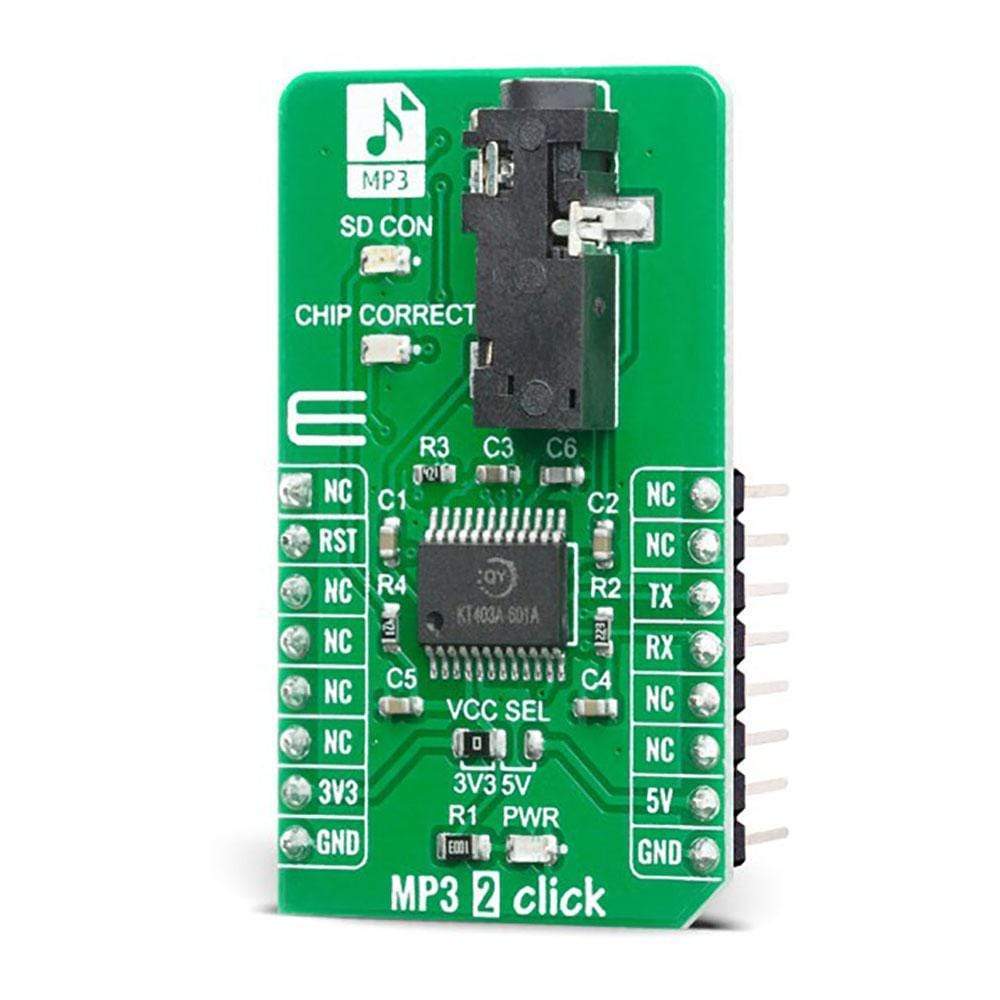
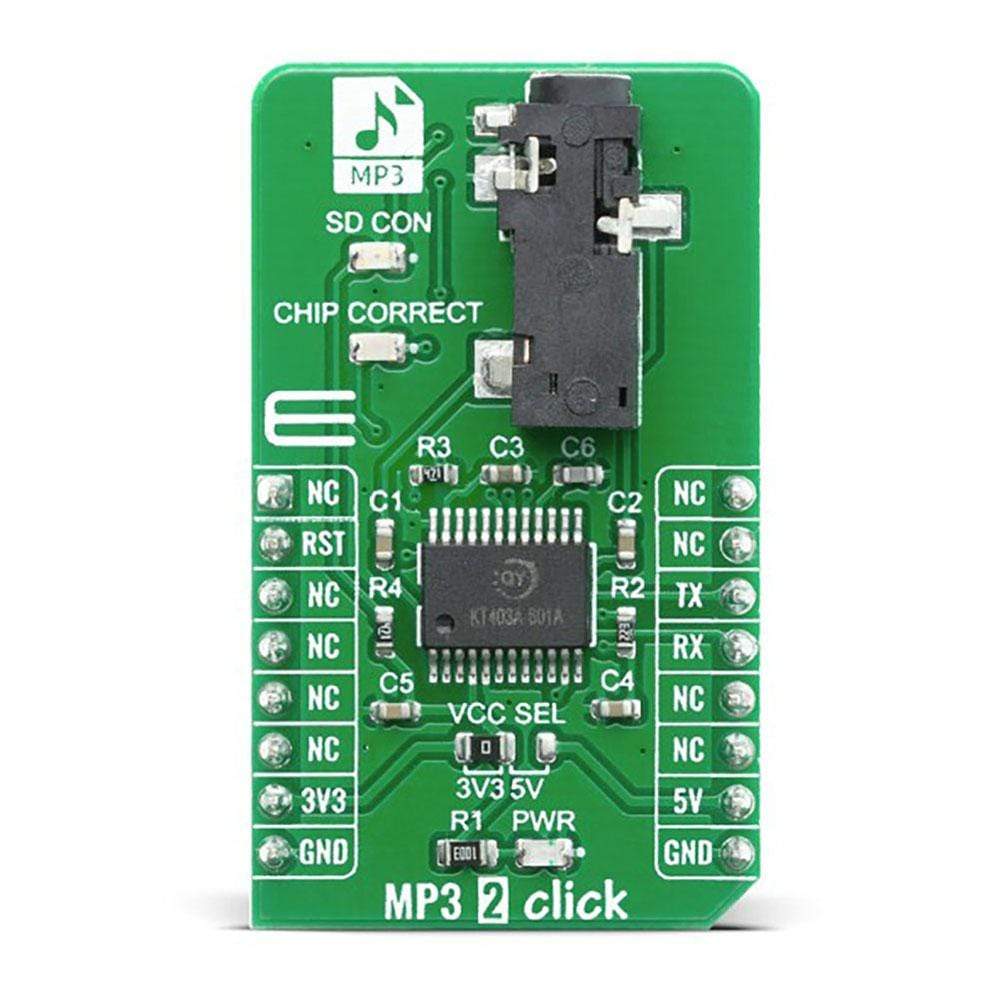
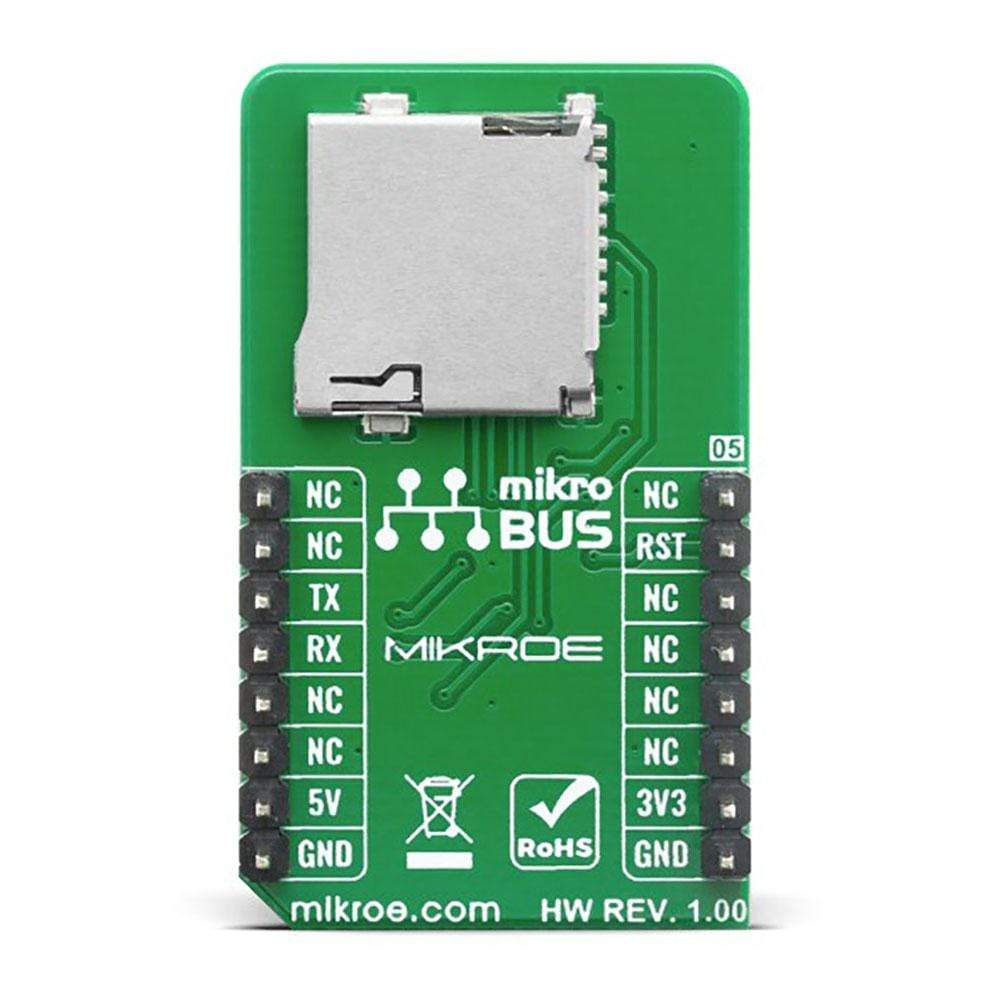
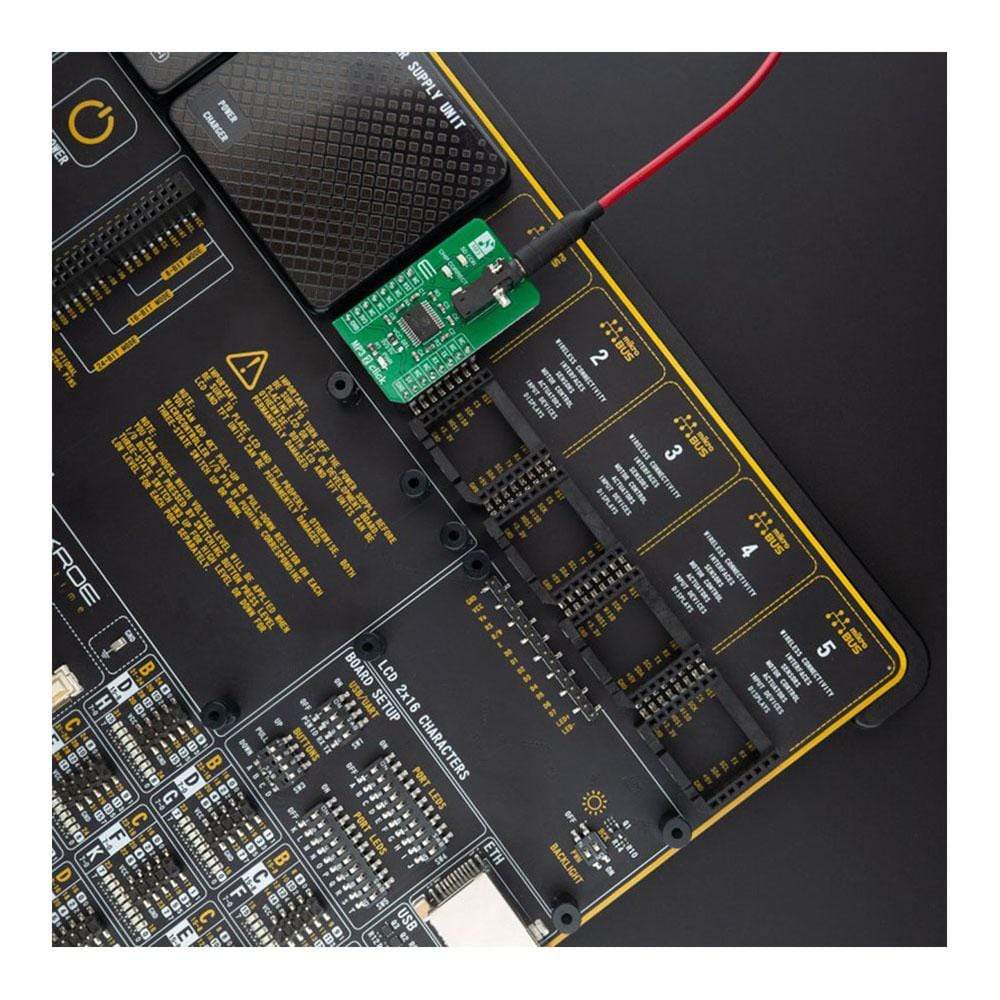
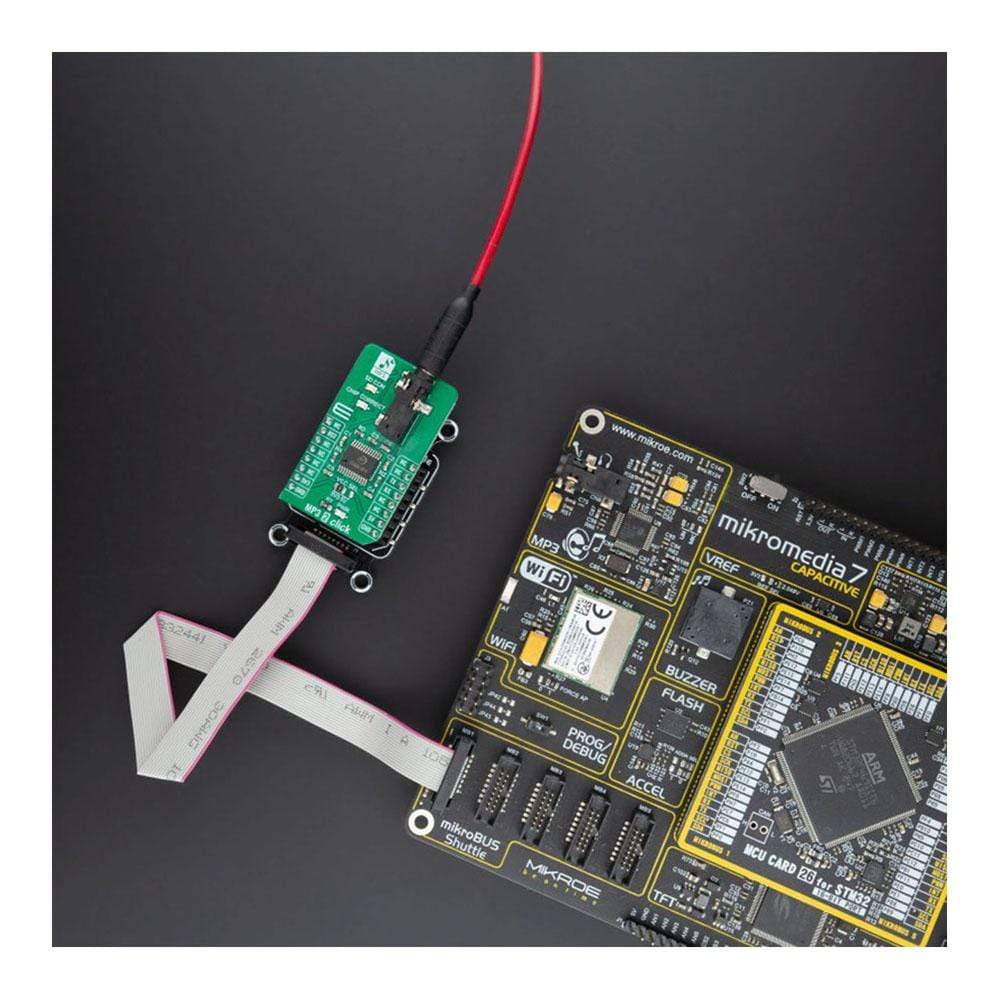
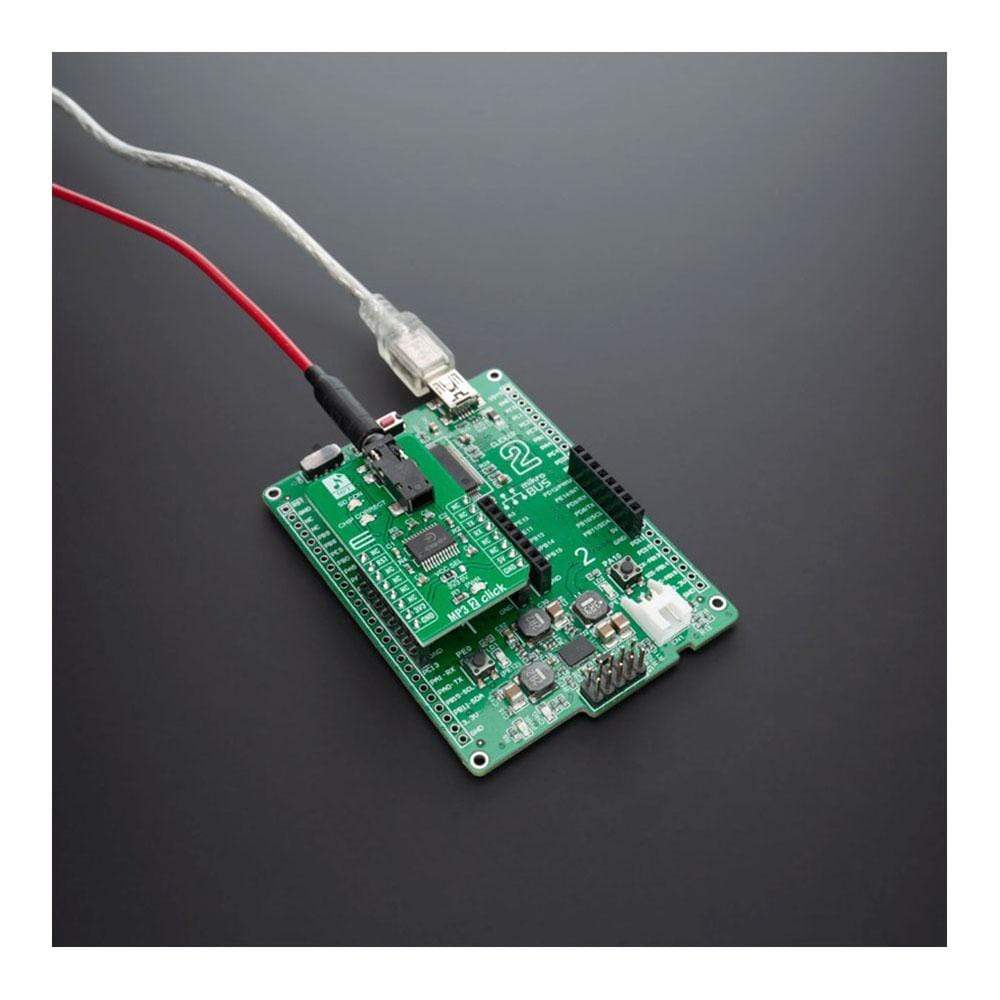
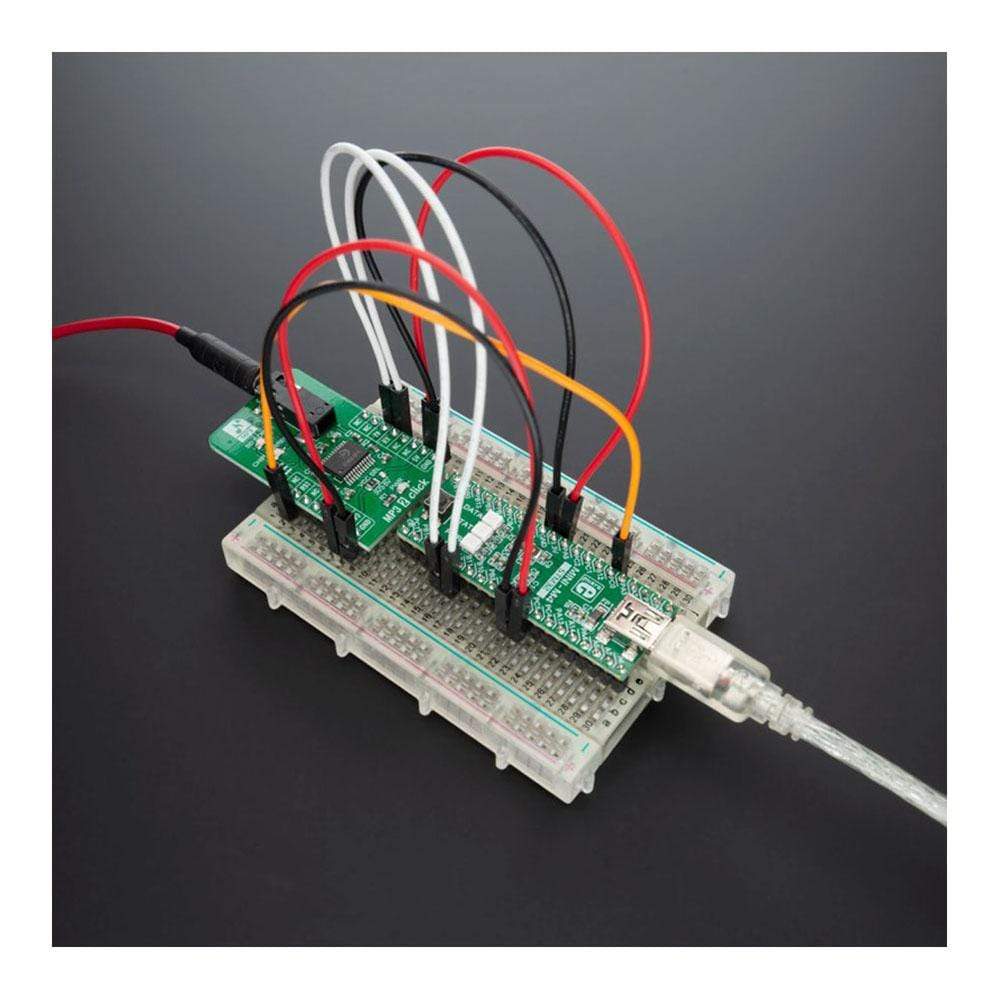
Overview
The MP3 2 Click Board™ is an audio decoder expansion board with an onboard microSD card slot, that enables you to create your personal audio playback system. It holds the KT403A, a SOC chip solution with intergraded MCU, hardware audio MP3/WAV decoder and DSP, from Shenzhen Qianle Microelectronics Technology Co. Ltd.
All the mentioned integrated hardware components enable the MP3 2 Click Board™ board to guarantee good stability and tone quality. You are able to use UART serial communication to control this board and do diverse operations with music files from microSD cards such as Play, Pause, Volume Up/Down, and many more. These features make MP3 2 Click Board™ the ideal solution for audio devices, in any application that demands an Audio Playback Module for MP3, WAV.
Downloads
Das MP3 2 Click Board™ ist eine Audio-Decoder-Erweiterungskarte mit integriertem microSD-Kartensteckplatz, mit der Sie Ihr persönliches Audiowiedergabesystem erstellen können. Es enthält den KT403A, eine SOC-Chip-Lösung mit integriertem MCU, Hardware-Audio-MP3/WAV-Decoder und DSP von Shenzhen Qianle Microelectronics Technology Co. Ltd.
Alle genannten integrierten Hardwarekomponenten ermöglichen der MP3 2 Click Board™ -Platine, gute Stabilität und Tonqualität zu gewährleisten. Sie können die serielle UART-Kommunikation verwenden, um diese Platine zu steuern und verschiedene Vorgänge mit Musikdateien von microSD-Karten auszuführen, wie z. B. Wiedergabe, Pause, Lautstärke hoch/runter und vieles mehr. Diese Funktionen machen MP3 2 Click Board™ zur idealen Lösung für Audiogeräte in jeder Anwendung, die ein Audiowiedergabemodul für MP3, WAV erfordert.
| General Information | |
|---|---|
Part Number (SKU) |
MIKROE-4159
|
Manufacturer |
|
| Physical and Mechanical | |
Weight |
0.019 kg
|
| Other | |
Country of Origin |
|
HS Code Customs Tariff code
|
|
EAN |
8606018717712
|
Warranty |
|
Frequently Asked Questions
Have a Question?
Be the first to ask a question about this.







